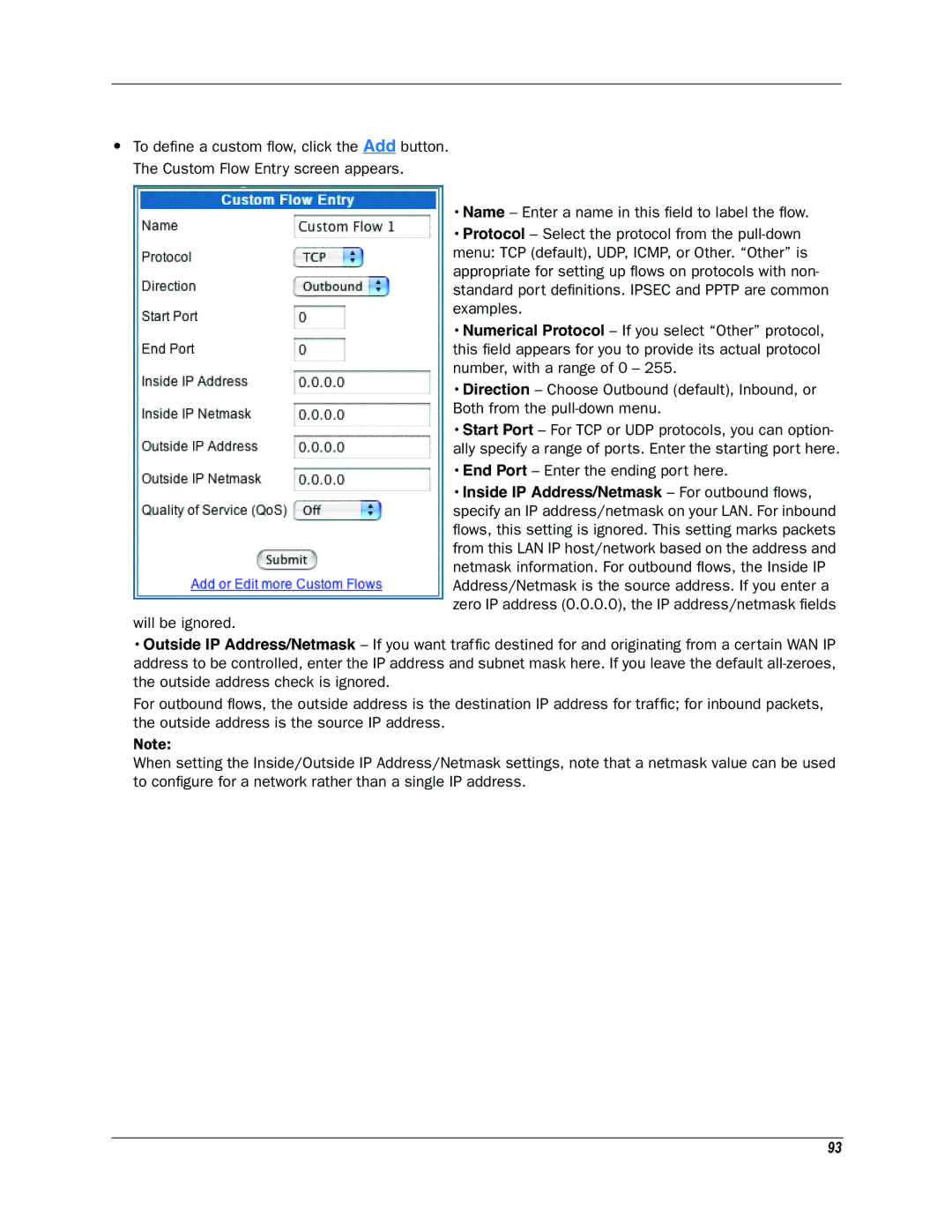
•To define a custom flow, click the Add button. The Custom Flow Entry screen appears.
•Name – Enter a name in this field to label the flow.
•Protocol – Select the protocol from the
•Numerical Protocol – If you select “Other” protocol, this field appears for you to provide its actual protocol number, with a range of 0 – 255.
•Direction – Choose Outbound (default), Inbound, or Both from the
•Start Port – For TCP or UDP protocols, you can option- ally specify a range of ports. Enter the starting port here.
•End Port – Enter the ending port here.
•Inside IP Address/Netmask – For outbound flows, specify an IP address/netmask on your LAN. For inbound flows, this setting is ignored. This setting marks packets from this LAN IP host/network based on the address and netmask information. For outbound flows, the Inside IP Address/Netmask is the source address. If you enter a zero IP address (0.0.0.0), the IP address/netmask fields
will be ignored.
•Outside IP Address/Netmask – If you want traffic destined for and originating from a certain WAN IP address to be controlled, enter the IP address and subnet mask here. If you leave the default
For outbound flows, the outside address is the destination IP address for traffic; for inbound packets, the outside address is the source IP address.
Note:
When setting the Inside/Outside IP Address/Netmask settings, note that a netmask value can be used to configure for a network rather than a single IP address.
93
